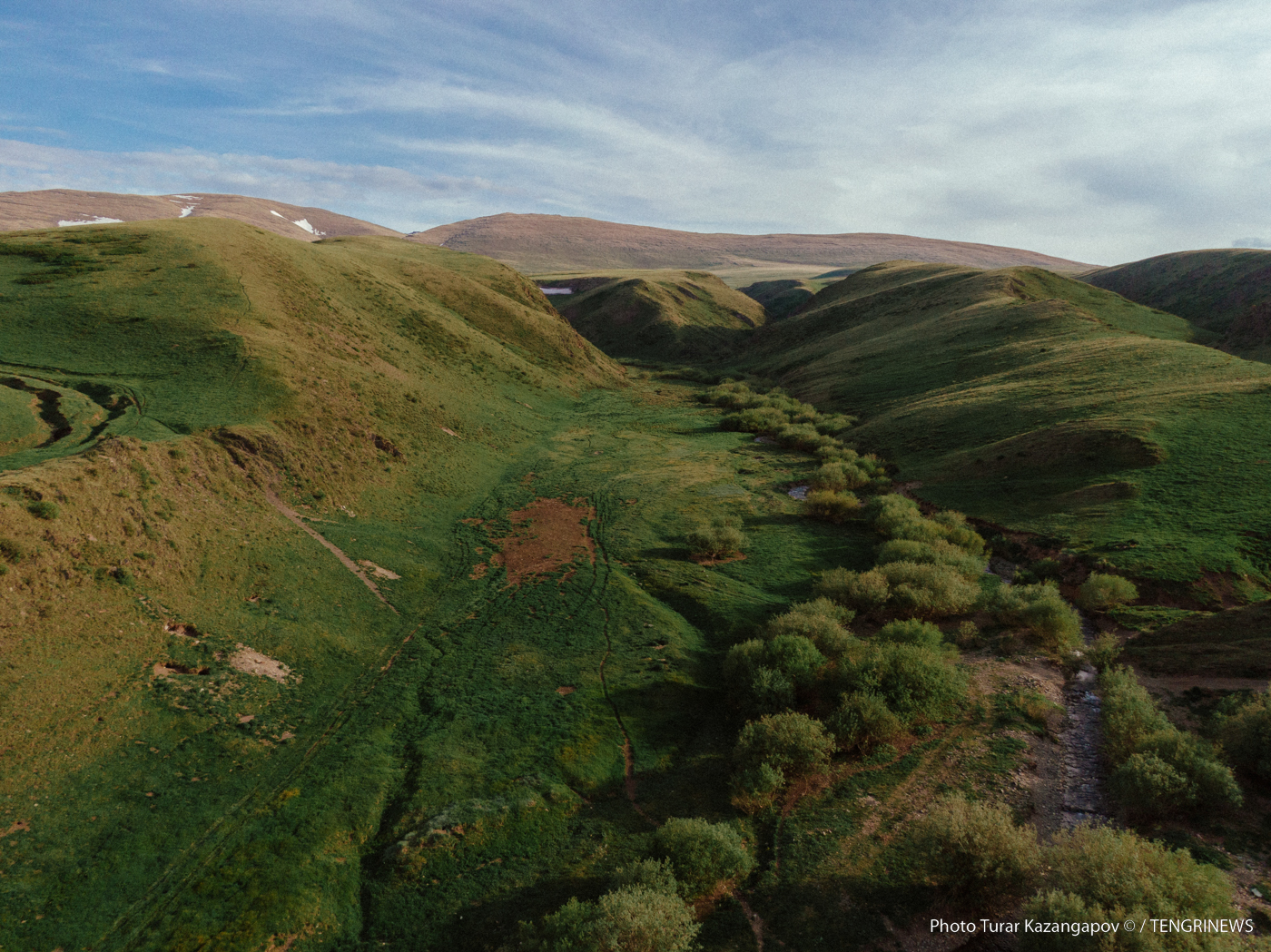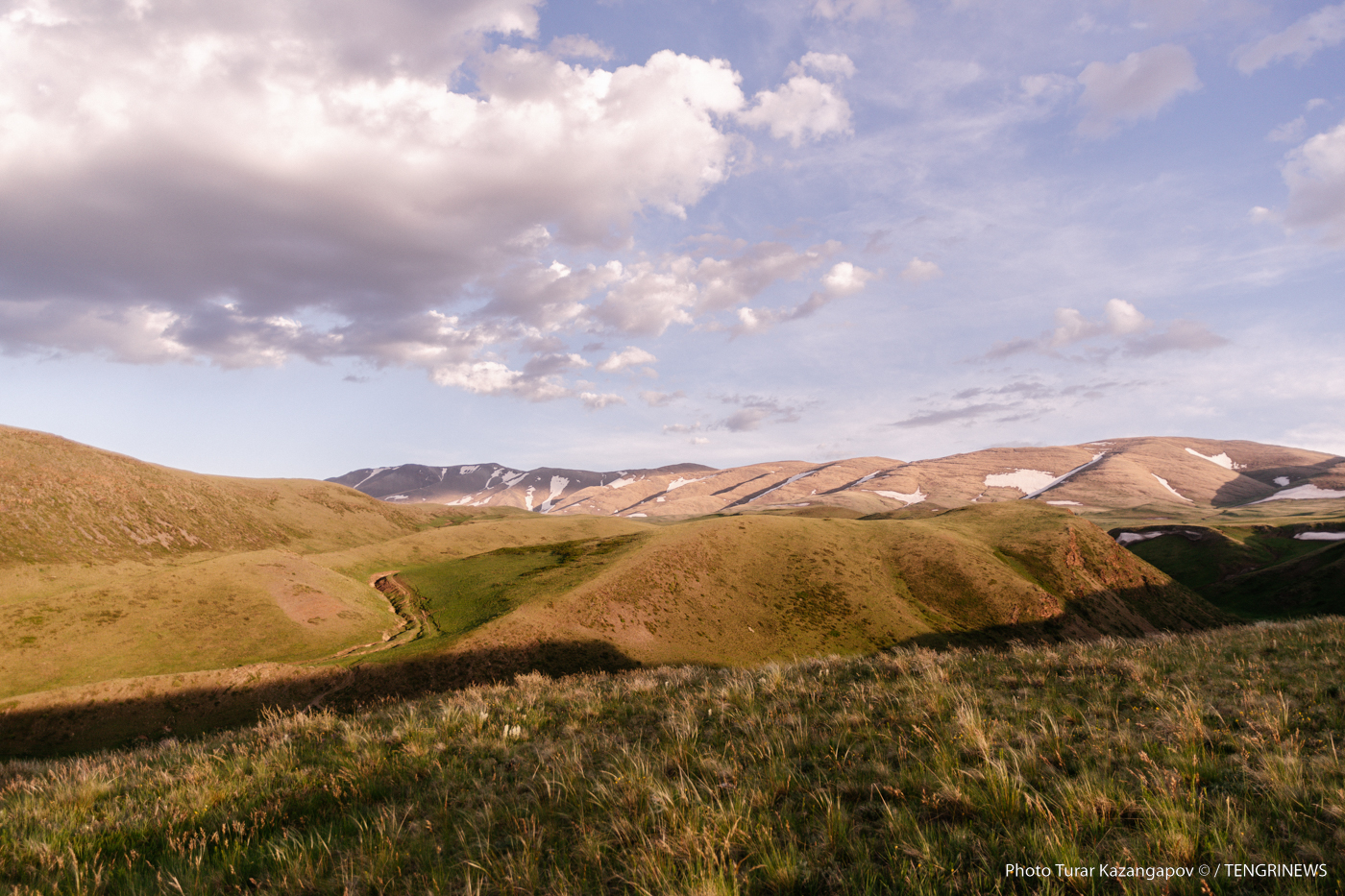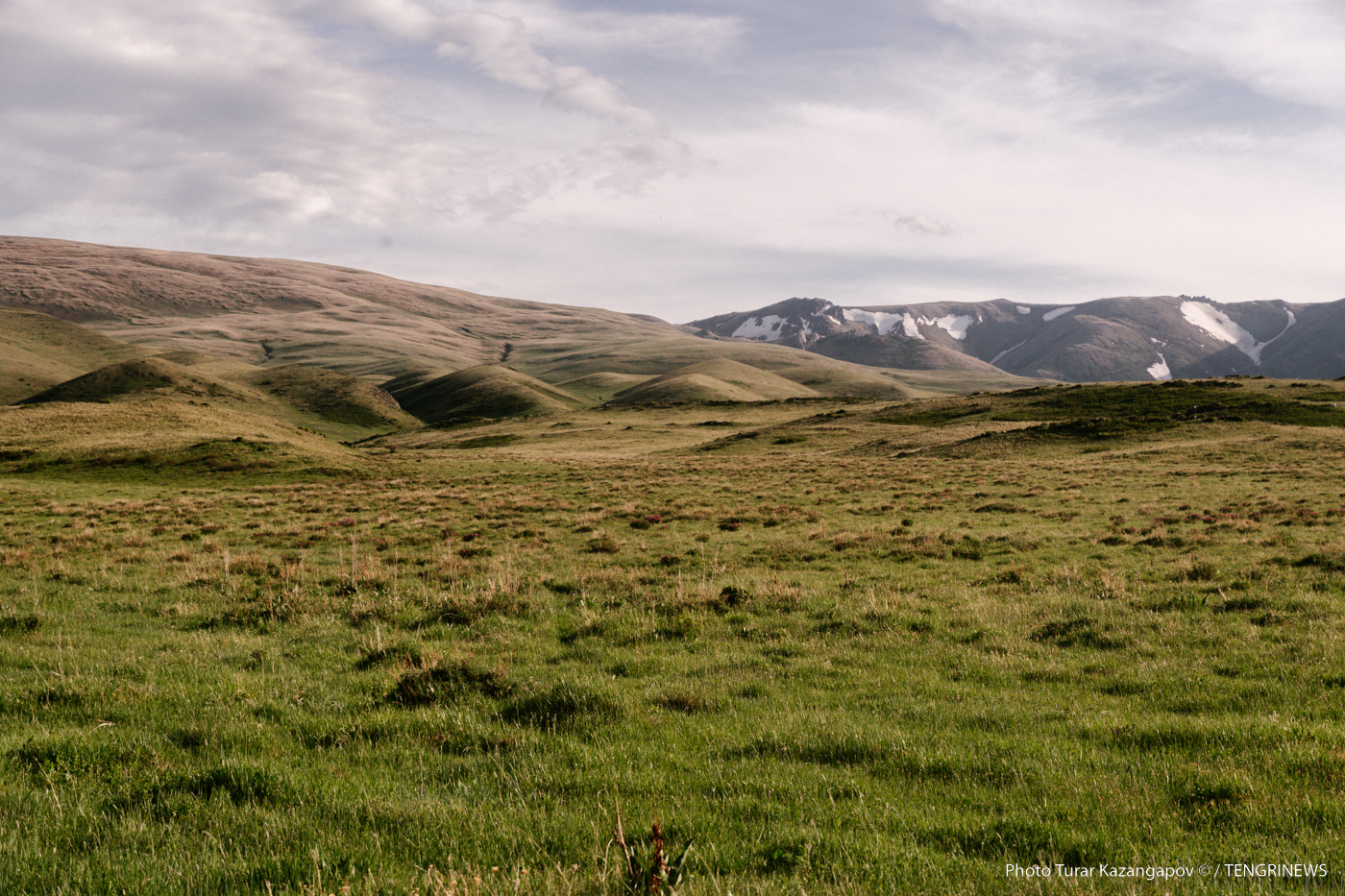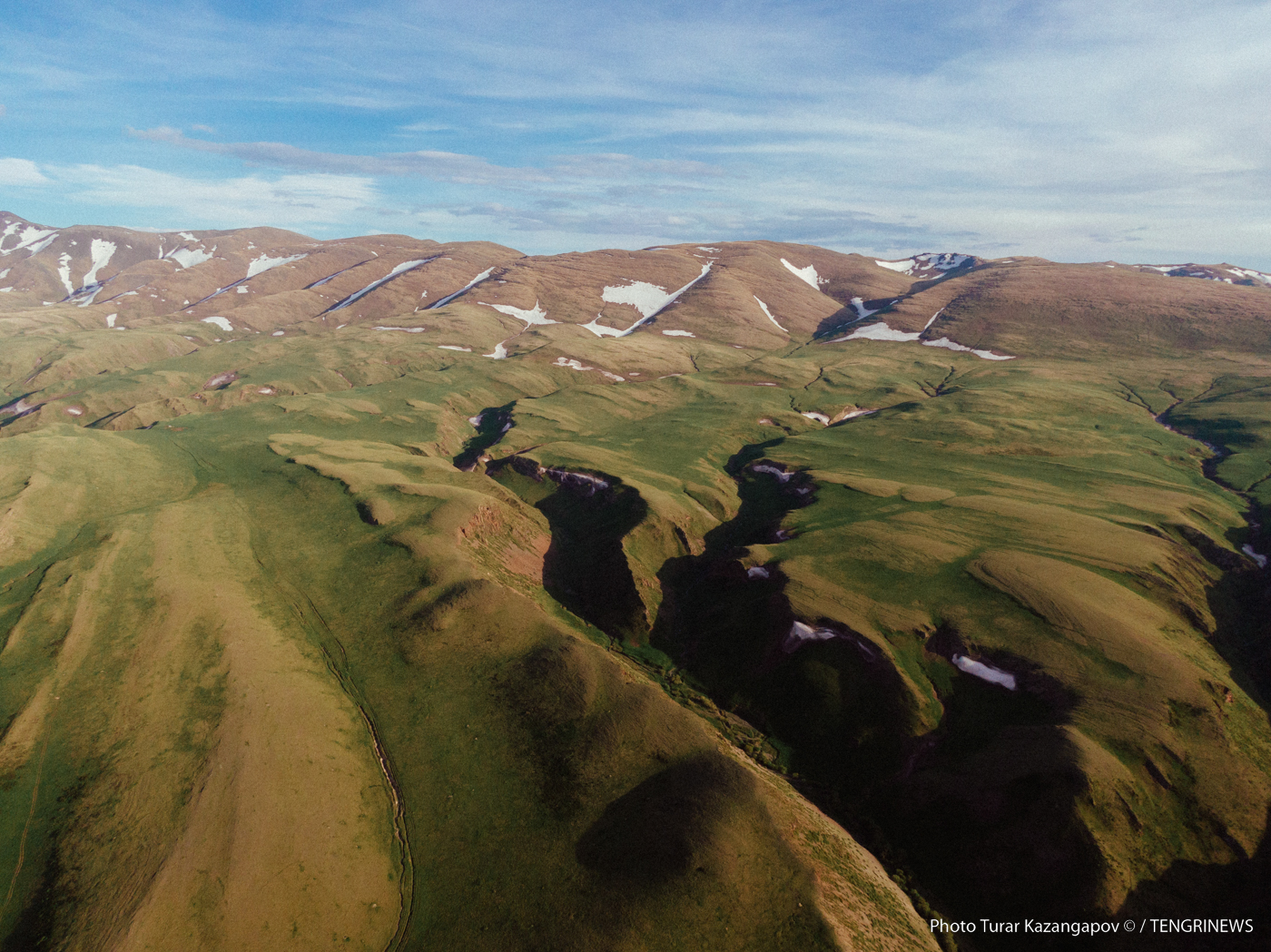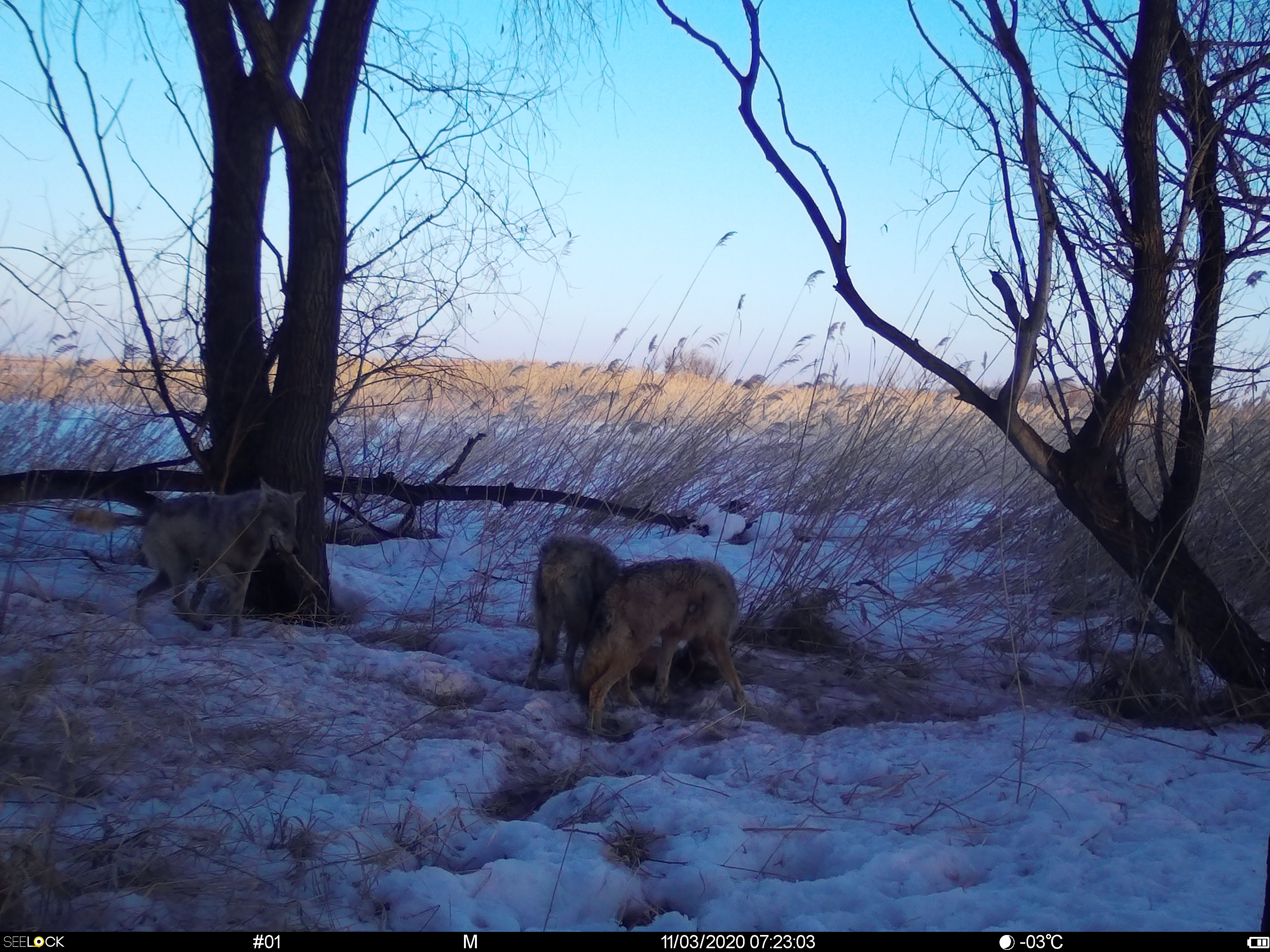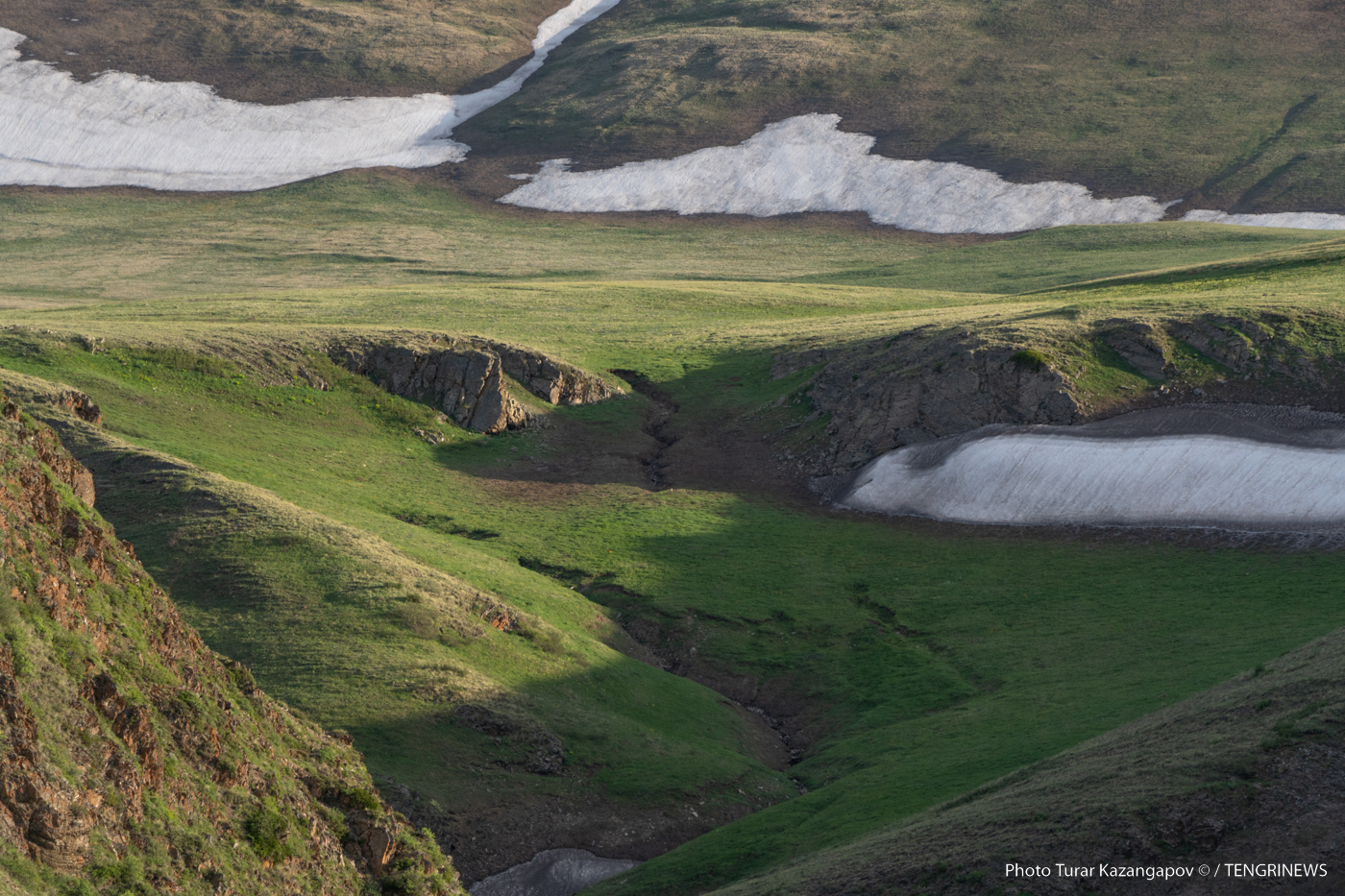Tarbagatai National Park
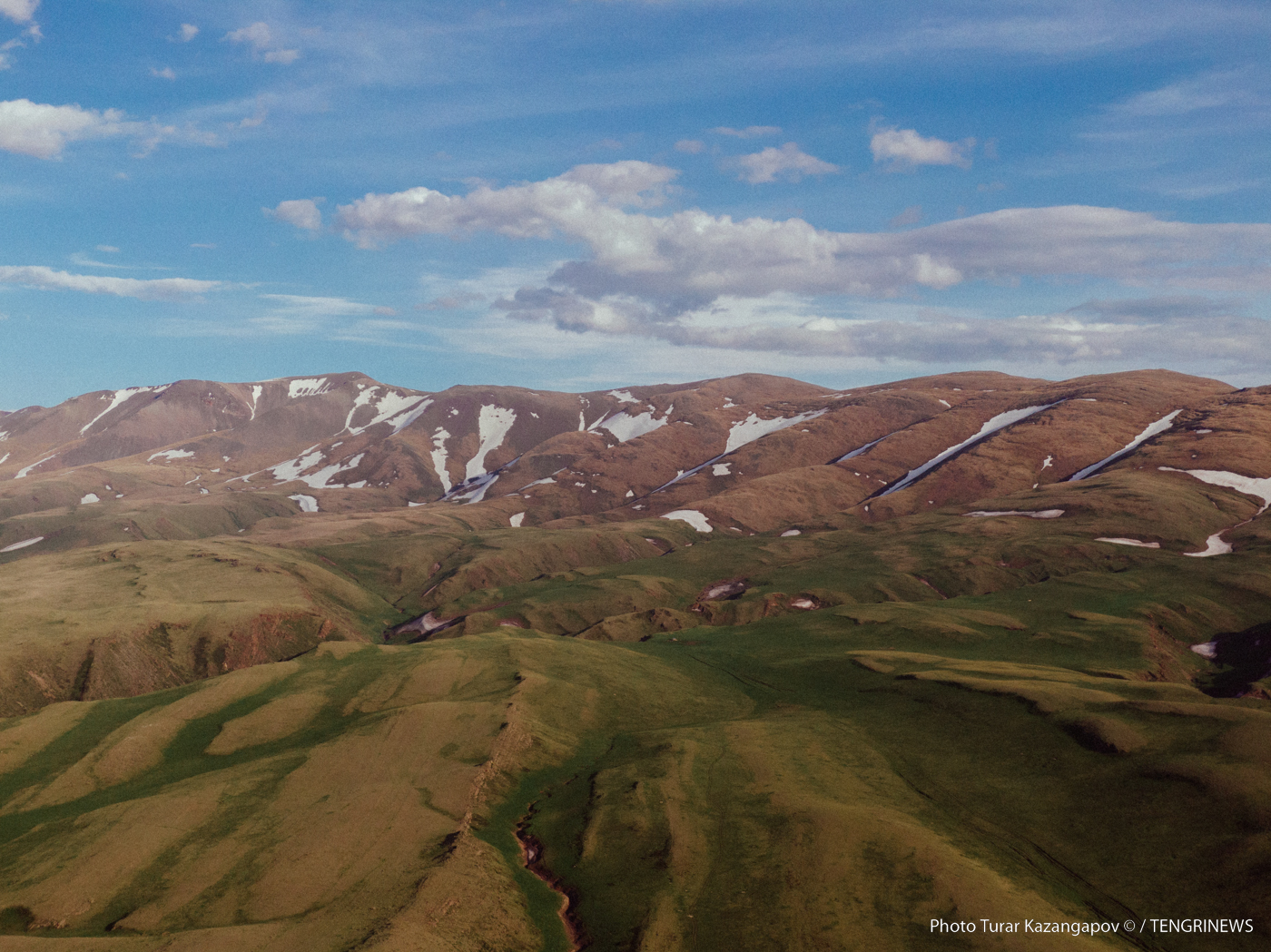
BACKGROUND INFORMATION
About park

Tarbagatai State National Natural Park is a national park in the Urjar district of the Abai region of Kazakhstan. It was formed according to Decree of the Government of Kazakhstan No.382 dated June 27, 2018.
Tarbagatai National Park was created to preserve the natural systems of the southern slope of the Tarbagatai ridge, as well as the Karabas and Arkaly Mountains, and the valleys of the Urzhar, Katynsu, and Emel rivers.
Tarbagatai National Park was created to preserve the natural systems of the southern slope of the Tarbagatai ridge, as well as the Karabas and Arkaly Mountains, and the valleys of the Urzhar, Katynsu, and Emel rivers.
Location
Abai region. Urdzhar district.
47.1659″ N. 81.4959″ E.
47.1659″ N. 81.4959″ E.
Flora
The flora includes 167 endemic species, among which 23 species of Tarbagatai endems are distinguished: Tarbagatai and Popov’s lungwort (Mertensia tarbagataica, M. popovii), Tarbagatai Stelleropsis (Stelleropsis tarbagataica), Tarbagatai Acantholimon (Acantholimon tarbagataicum), irregular Scullcap (Scutellaria irregularis), etc. On the territory of the future park there are 32 species of higher vascular plants included in the List of Rare and Endangered species of animals and plants of the Republic of Kazakhstan (2006): wind flower (Pulsatilla patens), spring and fluffy adonis (Adonis vernalis, A. villosa), Altai Gymnospermium altaicum, steppe and Urals peony (Paeonia hybrida, P. anomala), Altai and Vittroka (Rheum altaicum, R. witrockii), Potanin’s gerbil (Arenaria potaninii), Tarbagatai acantholymon, Kaufman’s Ikonnikovia (Ikonnikovia kaufmanniana), snow springhare (Macropodium nivale), Altai daphne (Daphne altaica), Tarbagatai stelleropsis, Snowdon rose (Rhodiola rosea), Altai siberia (Sibiraea altaiensis), Asian wild apple (Malus sieversii), Ledebur almond (Amygdalus ledebouriana), Kendyrlyk astragalus (Astragalus kendyrlyki), acanthaceous and bilobular oxytropes (Oxytropis hystrix, O. biloba), Potanin’s bean caperbush (Zygophyllum potaninii), Tarbagatai and Popov’s lungwort, Tarbagatai pedicularis (Pedicularis tarbagataica), safflower-shaped rhaponticum (Rhaponticum carthamoides), martagon lily (Lilium martagon), pale-flowered fritillary (Fritillaria pallidiflora), single-flowered and heteropetalous tulips (Tulipa uniflora, T. heteropetala), multi-root onion (Allium polyrhizum), marsh dormouse (Epipactis palustris).The general distribution of flora and fauna in Tarbagatai corresponds to the laws of vertical zonation. The desert belt lies at an altitude of up to 500 m above sea level in the lower reaches of the Emel and Katynsu rivers, it includes sandy and tugai complexes. Of the birds, this zone is characterized by gray and steppe larks, roller, European bee eater, common nightingale, Cetti’s warbler, desert lesser whitethroat, desert shrike, nightjar, Pallas’ sandgrouse, black-bellied sandgrouse, houbara bustard, etc. Mammals include the eared hedgehog, scilly shrew, corsac, Sus scrofa nigripes, steppe wild cat, little Chinese jird and tamarisk gerbil, gray hamster, tolai hare, the jerboa – small, large, four-toed jerboa and springbok.
The desert-steppe zone occupies the foothill plains at altitudes of 500-700 m above sea level on the southern slope. The vegetation cover is transitional from the desert to the mountain steppes and is mainly represented by shrub-wormwood-grass steppes with an admixture of various grasses on the southern slope and wormwood-fescue-feather-grass steppes. In the desolate Arkaly (1000 m above sea level) and Karabas (Bokty, 1273.8 m above sea level) mountains, a peculiar complex of fauna has developed, the basis of which is red-headed and gray-hooded buntings, steppe, eastern calandra and red-capped larks, pied chat and Isabelline chat, rufous-tailed and rock thrushs, rose-coloured starling, Mongolian trumpeter bullfinch, Rhodopechys sanguineus, jackdaw, hoopoe, lesser kestrel, saker falcon, common long-legged buzzard, steppe eagle, golden eagle, snake-eater, demoiselle, bustard, sheld duck, etc. In the desert plains adjacent to the mountains, there is a houbara bustard.
The steppe belt on the southern slope occupies shallow and gently wooded foothills and is especially well developed in the eastern part, where it rises to 1000-1200 m above sea level. Here it is represented by a combination of shrub-grass, shrub-type and shrub-grass-feather-grass steppes. This is a zone of cultivated land; it is here that the main arable land and vegetable gardens are located. Most of the territory (up to 80%) in the twentieth century was plowed and used for wheat, barley and sunflower crops. The main settlements are also concentrated here. Of the birds, the most characteristic are the skylark, tawny pipit, linnet, red-headed bunting, quail, grey partridge, etc.
The shrub belt (from 700-1200 to 1700-1800 m above sea level) occupies mainly the steep southern slope of the main ridge, but in its central part descends to the hollow-heeled loess foothills. Shrubby thickets on the loess foothills are mainly represented by almonds, above they are combined with rose gardens, aspen forests and apple trees. On the rocky slopes, you can often see honeysuckle, meadowsweet and colorful petrophilic grasses. In the deep gorges of rivers, dense thickets of willows, poplars and aspens are common, sometimes with a slight admixture of birch, hawthorn, cherry, viburnum. The valleys of the rivers are dominated by grass meadows. The main background of the population of birds of tree and shrub thickets is the common nightingale, great tit, azure tit, oriole, Turkestan red-backed shrike, common penduline tit, common lentil, tree pipit, gray-headed goldfinch, barred warbler and whitethroats, greenish warbler, magpie, carrion crow, blackbird, long-tailed and pine buntings, eastern turtledove, black grouse, booted eagle, black kite, hobby falcon, scops owl, long-eared owl, etc. The sandpiper, dipper, and gray wagtail nest along the riverbeds. Lesser and common kestrels, upland buzzard, golden eagle, partridge, crow, black redstart, pied wheatear, rocky swallow and house martins, rock thrush live in the rocks and scree along the steppe and meadow slopes of the ridge. The subalpine belt on the southern slope occupies gentle slopes and a plateform leveled watershed, in places with rock outcrops and rocky slopes (from 1700-1800 to 2400 m above sea level). Here, on the leveled sections of the watershed, the most widespread are geranium, cuffed and coarse-grained mixed–grass, and higher there are meadows of lady’s-mantles and cereal-mixed-grass colorful meadows. On the southern and south-western slopes there are grass-fescue, sedgy-fescue, wheatgrass and oatgrass steppes. On steep slopes there are thickets of junipers. Occasionally there are small patches of dogwood thickets. The characteristic birds are the field funnel, Himalayan and Arctoa mountain finches, blackcap, sulphur leaf warbler, Hume’s Leaf Warbler, black-throated thrush, mistle thrush, bluethroat, black swift.
The Alpine belt (2400-3100 m above sea level) occupies mainly the watershed part of the ridge, mostly leveled, with rocky wastelands, but in places with steep slopes, scree, small underground lakes. It is mainly dominated by Kobresia, both pure and in combination with other species – dwarf willow trees, Mongolian Ptilagrostis and lady’s-mantles. The slopes of the southern expositions are covered with quackgrass steppes and wheatgrass steppes; stony places are occupied by groups with a predominance of Tarbagatai mertensia and snowy potentilla, moistened – spots of Altai buttercup, sedges, gagea, rarely – small swamps of cotton grass, bayonet rush and other high-altitude plants. Of the birds in both belts, the rock pipit, shore lark, the chough, Alpine chough, common dotterel, rock ptarmigan, Himalayan snowcock, golden eagle, black vulture, Himalayan vulture and bearded vulture are found.
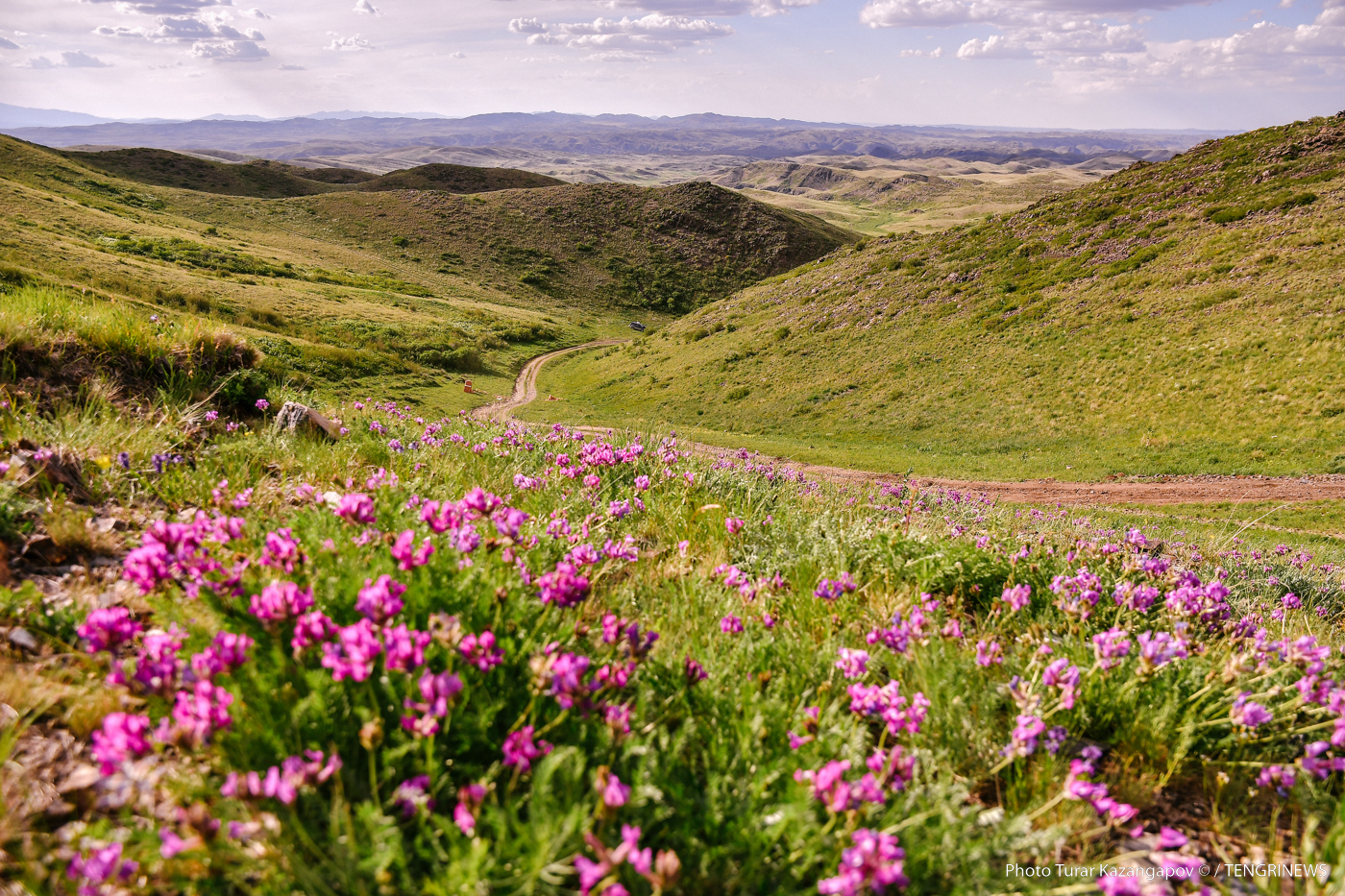
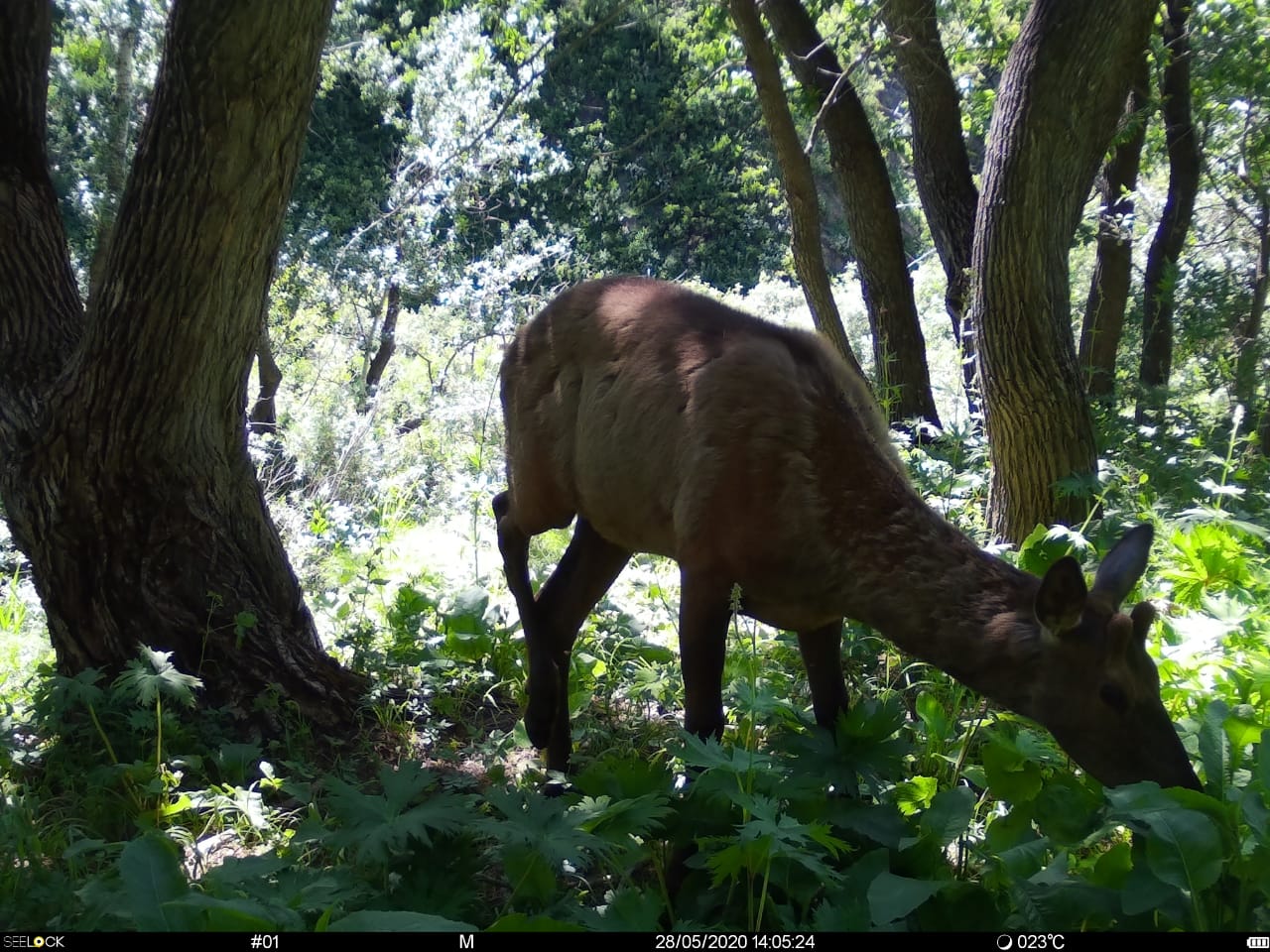
Fauna
According to preliminary data, the vertebrates of the park being created include 376 species, including fish – 19, Amphibias – 2, reptiles – 23, birds – 272 (of which 182 are nesting), mammals – 60 species. At least 19 species of fish have been recorded in the rivers of the foothill and mountainous parts of Tarbagatai, of which the aborigines of the Upland Asian fauna and the main inhabitants of rivers of the park are the short-tailed minnow, Balkhash marinka, scaleless osman, spotted and unicolored gubach, Tibetan common brook trout, Severtzov’s stone loach, Balkhash perch. Of amphibians, the native is the Pevtsov’s toad. Another amphibian species is the lake frog, which settled in Tarbagatai along rivers from the Alakol–Sasykkol lake system in 1980-1990. Of the reptiles, birds and mammals, the basis of the fauna of the plain part consists of representatives of the desert-steppe complex. The mountainous part of Tarbagatai is characterized by argali, bear, lynx, manul, stone marten, pale weasel, Arctic long-tailed shrews, Royle’s gray-sided mountain and fat-headed voles, common hamster, forest dormouse, white hare, which give this ridge a special faunal flavor.On the territory of the Tarbagatai National Park there are 40 rare and endangered species of vertebrates listed in the Red Book of Kazakhstan (2008). Of the reptiles, the rarest slender racer (Coluber spinalis) in Kazakhstan is found here. Birds are represented by 33 species, including 17 breeding ones: black stork (Ciconia nigra), short-toed eagle (Circaetus gallicus), booted eagle (Hieraaetus pennatus), steppe eagle (Aquila nipalensis), imperial eagle (Aquila heliaca), golden eagle (Aquila chrysaetos), bearded vulture (Gypaetus barbatus), Himalayan vulture (Gyps himalayensis), saker falcon (Falco cherrug), grey crane (Grus grus), houbara bustard (Anthropoides virgo), bustard (Otis tarda), beauty bustard (Chlamydotis undulata), black-bellied sandgrouse (Pterocles orientalis), Pallas’ sandgrouse (Syrrhaptes paradoxus), eastern stock dove (Columba eversmanni), owl (Bubo bubo). In addition, there are known summer locations of stiff-tailed ducks (Oxyura leucocephala), osprey (Pandion haliaetus), barbary falcon (Falco pelegrinoides), duck hawk (Falco peregrinus), ibis-bill (Ibidorhyncha struthersii), nesting of which is not excluded here. Among the rare mammals, the Tien Shan bear (Ursus arctos isabellinus), stone marten (Martes foina), manul (Felis manul), Turkestan lynx (Lynx lynx isabellinus), snow leopard (Uncia uncia), Kazakh argali (Ovis ammon collium) live here. In the sandy massifs along the Emeli Valley, you can meet a marbled polecat (Vormela peregusna).
Characterizing the current state of ecosystems, it should be noted that the nature of the southern slopes and watersheds of Tarbagatai is the most preserved, while the foothill steppe and desert zones are heavily developed. The fauna and flora of the highest and most inaccessible part of the ridge, where alpine and sub-alpine ecosystems have been perfectly preserved, has undergone the least changes.
The desert-steppe mountains of Arkaly and Karabas, lying on the foothill plain, are the most important habitat for rare and endangered species of animals – first of all, argali and birds of prey. In the steppe valley between them, a summer-autumn focus of concentration of molting and migrating bustard has formed, the number of which has increased to 100-130 species in recent years. The number of argali in the Karabas Mountains, which previously amounted to 20-30 individuals, increased to 50 individuals by the autumn of 2008. Another important habitat of argali is the area of the inaccessible Tastau peak in Tarbagatai itself, where its population is at least 100 heads. There is also a process of restoration of the Altai marmot population in the Karabas Mountains, which was previously heavily exterminated. However, only 2-3 marmot families remained in the Arctic in 2004, the current state is not known. In the last five years, due to the lack of proper protection, the number of the local saker falcon population has been severely undermined. In 2000-2005, 10-15 pairs nested here, but then as a result of poaching of chicks from nests and trapping of adult birds, the number decreased to a critical minimum.
Photo gallery
Contacts
General questions
Expedition, events
Interaction with Media
Legal information
ACCESSION QUESTIONARY
Individual
Status (on the procedure of accession to members and membership in the RPA in PDF format)
Legal entity
Status (on the procedure of accession to members and membership in the RPA in PDF format)

Спасибо!
Ваша заявка успешно отправлена
Мы свяжемся с вами в ближайшее время
Submit a work to the “My Kazakhstan” contest

Спасибо!
Ваше фото успешно отправлено
Ожидайте выбора победителей!

Спасибо!
Ваш заказ успешно отправлен
Мы свяжемся с вами в ближайшее время

